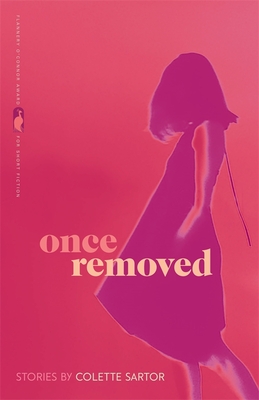A woman comes to terms with the conditions of
her existence. Her husband has just died--everything has started to come apart
in her--human extinction is imminent, the world is burning down, etc. She tries
to figure out if she can carry on, how she
can carry on. It’s a small book, gentle but also sharp. I think of it as a
pocketknife.
What boundaries did you break in the
writing of this book? Where does that sort of courage come from?
I think I refused certain conventions. In some
ways it’s a stark, sparse book. There is little backstory, little dialogue or
description. It has an honesty and intensity that might ask a lot of readers. I
think it gives voice to complicated, sometimes conflicting desires. And I think
it represents the collapse of the natural world in an unsettling way. The
climate is not dramatized in the book--I was careful to make sure it doesn’t
feel like a major crisis at every moment in the book. I wanted it to feel the
way it does now, and for that fact itself to be unsettling. The collapse of the
world is accepted, sometimes with a shrug (because what else can we really do?), and people struggle to keep
living their lives, adjusting and adapting as the food runs out, as the summers
become unbearable.
The courage to write this book came from
feeling like I had no other option. I wasn’t able to articulate it at first,
but at some point it become clear that my choices were: write this book (over
the course of 8 years) and work through the issues the book takes on, or let
your soul wither and die.
Tell us a bit about the highs and lows of
your book’s road to publication.
I knew this book was not exactly bestseller
material, and I had a sense that it might be a good fit for the indie world,
but I knew nothing about publishing in general. My only previous publications
were academic ones, and I didn’t know many published (non-academic) writers, so
I didn’t have any points of entry or anyone I could ask for advice. I started
looking for an agent because most information I could find said that getting an
agent is step one. I tried for a couple years, and I got some genuinely helpful
feedback from some commercially successful agents who said (often in coded
language): Look, you just aren’t the writer we’re willing to take a chance on
right now. Some were direct enough to say that most publishing houses will only
take on a couple “intellectual women” each year, so my chances of being picked
up by them were too slim, especially because I’m totally unknown.
Once I started looking carefully at as much of
the indie world as I could, my mind was blown. It’s just packed with daring, creative writers who break all the rules in
interesting ways and for good reason. I knew I would eventually find my place
with an indie publisher. Once I found CLASH, everything changed.
What’s your favorite piece of writing
advice?
My former adviser once said to me, when I was
really struggling to finish my dissertation: You’re a good steady driver,
Lindsay, you just need to not let go of the wheel. It was life advice
masquerading as writing advice, though I’m sure she wasn’t trying to give me life advice. Some version of that is what I
typically need to hear (or tell myself) to keep going. Keep steering this
thing, accept that steering it is your responsibility--that there is no one
else to take the wheel, that if you let go of the wheel, this thing you want to
happen simply will not happen.
The other piece of writing advice I tend to
keep in mind a lot is to be wild and ferocious in imagination but quiet and
disciplined in practice.
My favorite writing advice is “write until
something surprises you.” What surprised you in the writing of this book?
What surprised me most is how much the writing
of it would inform my life and allow me to re-shape my life. I don’t mean that
I became the characters or anything like that. I mean that I saw that when you
start writing in forms you don’t recognize, you can also start living in forms
you don’t recognize. Creating a world on the page allowed me to see the extent
to which we are all creations that can be made and re-made.
How did you find the title of your book?
The title and a couple scenes were the
first things I thought of when I began the book, back in 2010. I was living in
Istanbul, Turkey at the time, and I was thinking a lot about what it means to
have a home, a place. When we examine what has made us--customs, traditions,
habits, dreams, compulsions--it’s very difficult to say where any of us is from. It just felt right. I assumed it would be
the working title and that I’d eventually change it, but it stuck.
Inquiring foodies and hungry book clubs
want to know: Any food/s associated with your book?
Haha, I am food-obsessed--this is the kind of
question I dream of. The book is very much about hunger, having a bigger hunger
than one is supposed to. But there’s very little food in the book. One scene
features a hamburger and fries. I had so much fun writing that scene, writing
the burger as this thing that represents so much--so many resources in one
obscenely decadent but really commonplace meal. When I want a burger, though, I
don’t try to make it at home. I can’t get it right, so I leave it to the pros.
*****
READ MORE ABOUT THIS AUTHOR: https://lindsaylerman.com/
ORDER THIS BOOK FOR YOUR OWN TBR STACK: https://www.clashbooks.com/new-products-2/lindsay-lerman-im-from-nowhere-preorder



